Special Offers
Flowers & Plants
Seeds
Fruit & Vegetables
House Plants
New In & Trending
Tool Shed
Outdoor Living
Garden Tips
Garden Plants
Shrubs
Flower Seeds
Flower Bulbs & Tubers
Plants for Pollinators
New In & Trending
Flowers Despatching This Week
Back to Garden Plants
Garden Plants
Annual Plants
Perennial & Biennial Plants
Bare Root Trees & Plants
Garden Ready Plants
Hanging Basket Plants
Patio Plants
Plug Plants
Potted Hardy Plants
Pre Planted Hanging Baskets
Trees
Back to Shrubs
Shrubs
Buddleja Shrubs
Campsis Shrubs
Cornus Shrubs
Coronilla Shrubs
Daphne Shrubs
Gardenia Shrubs
Hibiscus Shrubs
Holly Shrubs
Hydrangea Shrubs
Back to Flower Seeds
Flower Seeds
Hardy Annual Seeds
Half-Hardy Annual Seeds
Perennial & Biennial Seeds
Wildflower Seeds
Cosmos Seeds
Marigold Seeds
Nasturtium Seeds
Petunia Seeds
Poppy Seeds
Sunflower Seeds
Sweet Pea Seeds
Edible Flower Seeds
Royal Botanic Gardens, Kew, Seeds
Mr Men & Little Miss Seeds
New Flower Seeds
All Other Flower & Shrub Seeds
All Seeds
Flowers to Sow in January
Flowers to Sow in February
Flowers to Sow in March
Flowers to Sow in April
Flowers to Sow in May
Flowers to Sow in June
Flowers to Sow in July
Flowers to Sow in August
Flowers to Sow in September
Flowers to Sow in October
Flowers to Sow in November
Flowers to Sow in December
Back to All Seeds
All Seeds
Easy to Grow Seeds
Popular Flower Seeds
Seeds to Sow Now
Mr Men & Little Miss Seeds
Royal Botanic Gardens, KEW Seeds
Trending Seeds
Back to Flower Seeds
Flower Seeds
New Flower Seeds
All Seeds
Hardy Annual Seeds
Half-Hardy Annual Seeds
Perennial & Biennial Seeds
Royal Botanic Gardens, Kew Seeds
Mr Men & Little Miss Seeds
Wildflower Seeds
Cosmos Seeds
Marigold Seeds
Nasturtium Seeds
Petunia Seeds
Poppy Seeds
Sunflower Seeds
Sweet Pea Seeds
All Other Flower & Shrub Seeds
Flowers to Sow in January
Flowers to Sow in February
Flowers to Sow in March
Flowers to Sow in April
Flowers to Sow in May
Flowers to Sow in June
Flowers to Sow in July
Flowers to Sow in August
Flowers to Sow in September
Flowers to Sow in October
Flowers to Sow in November
Flowers to Sow in December
Back to Vegetable Seeds
Vegetable Seeds
New Vegetable Seeds
Beetroot & Chard Seeds
Brassica & Leafy Green Seeds
Carrot & Parsnip Seeds
Cucumber Seeds
Herb Seeds
Onion & Leek Seeds
Pea & Bean Seeds
Pumpkin, Squash & Courgette Seeds
Salad Seeds
Spinach Seeds
Sweet Pepper & Chilli Seeds
Tomato Seeds
All Other Vegetable Seeds
Royal Botanic Gardens, Kew Seeds
Mr Men & Little Miss Seeds
Vegetables to Sow in January
Vegetables to Sow in February
Vegetables to Sow in March
Vegetables to Sow in April
Vegetables to Sow in May
Vegetables to Sow in June
Vegetables to Sow in July
Vegetables to Sow in August
Vegetables to Sow in September
Vegetables to Sow in October
Vegetables to Sow in November
Vegetables to Sow in December
Vegetable Seeds
Potatoes, Onions & Garlic Sets
Vegetable Plants
Fruit
New In & Trending
Fruit Despatching This Week
Back to Vegetable Seeds
Vegetable Seeds
Pea & Bean Seeds
Broad Bean Seeds
Runner Bean Seeds
Pepper (Sweet) & Chilli Seeds
Carrot & Parsnip Seeds
Brassica & Leafy Green Seeds
Cucumber Seeds
Herb Seeds
Salad Seeds
Onion & Leek Seeds
Pumpkin, Squash & Courgette Seeds
Beetroot & Chard Seeds
All Other Vegetable Seeds
Tomato Seeds
Winter Vegetable Seeds
Vegetables to Sow in January
Vegetables to Sow in February
Vegetables to Sow in March
Vegetables to Sow in April
Vegetables to Sow in May
Vegetables to Sow in June
Vegetables to Sow in July
Vegetables to Sow in August
Vegetables to Sow in September
Vegetables to Sow in October
Vegetables to Sow in November
Vegetables to Sow in December
Back to Potatoes, Onions & Garlic Sets
Potatoes, Onions & Garlic Sets
First Early Potatoes
Second Early Potatoes
Maincrop Potatoes
Second Cropping Potatoes
Sweet Potatoes
Onions, Shallots & Garlic Sets
Back to Vegetable Plants
Vegetable Plants
Artichoke Plants
Asparagus Plants
Brassica & Leafy Green Plants
Cucumber Plants
Culinary Herb Plants
Pea & Bean Plants
Pepper (Sweet) & Chilli Plants
Salad Plants
Mushroom Kits
Flowers & Plants New & Trending
Fruit & Vegetables New & Trending
Seeds New & Trending
House Plants New & Trending
Garden Ready New & Trending
Back to Flowers & Plants New & Trending
Flowers & Plants New & Trending
New Flower Plants
New Flower Seeds
New Bulbs & Tubers
Looking Good on the Nursery
Recommended by our Experts
Trending Flowers & Plants
Back to Fruit & Vegetables New & Trending
Fruit & Vegetables New & Trending
New Vegetable Plants
New Vegetable Seeds
New Fruit Plants
New Fruit Trees
Recommended by our Experts
Trending Fruit & Vegetables
Garden Tools & Equipment
Garden Machinery
Garden Compost
Garden Worms
Plant Pots
Garden Irrigation & Watering
Fertilisers
Plant Protection
Hanging Baskets
Pest Control
Back to Garden Tools & Equipment
Garden Tools & Equipment
Barrows & Trolleys
Garden Gloves
Composting
Hand Tools
Harvesting
Lawn Seed
Plant Supports
Sowing & Growing
Tree Stakes
Weed Control
Workshop
Garden Furniture
Buildings & Fencing
Landscaping
Garden Living
Water Features
Wild Bird Food
Bird Care Accessories
Wildlife Havens
Back to Buildings & Fencing
Buildings & Fencing
Back to Garden Living
Garden Living
Barbecues & Firepits
Garden Storage
Solar Lights & Lighting
Fixtures & Ornaments
Garden Clocks
Patio Heaters
Back to Gardening Hubs
Gardening Hubs
House & Garden Plants
Alpines & rockery plants
Annuals
Bedding plants
Begonias
Clematis
Climbing plants
Conifers
Dahlias
Drought-proof plants
Evergreen plants
Exotic plants
Fuchsias
Gardening for wildlife
Geraniums
Grasses
Hanging baskets
Houseplants
Hydrangeas

What to do in Your Garden to Encourage Wildlife
Bees, birds, butterflies and mammals all play a vital role in the biodiversity of our gardens and theres all sorts of things you can do to help them, no matter what time of year! From growing nectar-rich flowers, to making a log pile our wildlife gardening calendar is full of ideas to help get you started.
January

- Take part in the RSPB's Big Garden Birdwatch to help monitor the UK's birds.
- Put up nest boxes for birds before the nesting season begins.
- Ensure birds have access to fresh water by melting ice in bird baths. Hang bird feeders and suet-based fat balls to help birds maintain their fat reserves in cold weather.
- Plant native hedges using dormant bare-root plants.
- For January flowers which attract early bees and pollinating insects try growing snowdrops, Daphne, Viburnum x bodnantense 'Dawn' and Sarcococca.
- If the ground is workable, consider planting trees and shrubs to provide shelter and make your garden more welcoming to birds, hedgehogs, toads, mice and shrews.
February

- If your soil is workable, prepare beds and borders for sowing wild flower seeds. The soil should be left to settle for 6 weeks before sowing.
- Put up nest boxes for birds.
- Melt the ice on bird baths using hot water so they have access to fresh water.
- Put out food for birds. Blue tits, sparrows and chaffinches will use hanging feeders; blackbirds, thrushes and starlings will take food from the ground. Read our Birds article for advice on feeding birds.
- When choosing your plants for this year try including nectar-rich flowers for bees and butterflies or shrubs for birds. Take a look at our 'Plants for wildlife' article for inspiration.
- For February flowers which attract bees and pollinating insects try growing winter aconite, primroses, Viburnum x bodnantense 'Dawn', Clematis cirrhosa and winter honeysuckle
- Consider making a pond as this will provide a habitat for aquatic insects, newts and frogs, and attract dragonflies, bats and other wild animals.
- Plant native hedges using dormant bare-root plants.
- If the ground is workable, consider planting trees and shrubs to provide shelter and make your garden more welcoming to birds, hedgehogs, toads, mice and shrews.
March
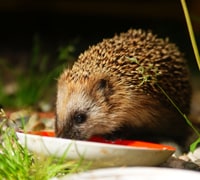
- Sow wild flower seeds direct now, provided the soil is workable. Read our 'How to sow wildflower seeds' article for tips and advice.
- Take care when strimming or digging areas with long grass or piles of leaves as some creatures may still be hibernating.
- Put up nest boxes for birds.
- Clean and disinfect birdbaths and feeders to prevent the spread of viruses and disease.
- Feed hedgehogs emerging from hibernation with meaty dog food or ready-made hedgehog food.
- Continue to feed birds, especially in cold weather. Avoid chunky food such as peanuts and bread that can choke nestlings. Find out what to feed birds with our Bird article.
- Think ahead to your summer borders and try including nectar-rich flowers for bees and butterflies or shrubs for birds. Take a look at our 'Plants for wildlife' article for inspiration.
- Take care when strimming or digging areas with long grass or piles of leaves as some creatures may still be hibernating.
- Work well-rotted manure or compost into your soil. This helps feed plants and also benefits earthworms and insects.
- Consider making a pond as this will provide a habitat for aquatic insects, newts and frogs, and attract dragonflies, bats and other wild animals.
April
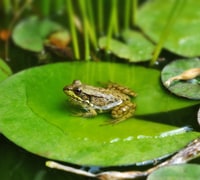
- Sow wild flower seeds direct now, provided the soil is workable. Read our 'How to sow wildflower seeds' article for tips and advice.
- Give evergreen herbs such as thyme, lavender and rosemary a trim now to promote bushy growth and better flowering for insects.
- Keep bird feeders and bird baths topped up. Avoid putting out whole nuts and bread as these can choke nestlings. Find out what to feed birds with our Bird article.
- Strimmers present grave danger to hedgehogs, frogs and other wildlife. Always disturb areas of long grass prior to strimming.
- Continue to feed hedgehogs with meaty dog food or ready-made hedgehog food, especially if the weather is cold.
- Mulch around shrubs and perennial plants to help feed them naturally and keep the soil in good conditon.
- Plant evergreen hedges now - these are excellent for sheltering birds, insects and mammals all year round. Holly and Yew are good native choices.
- Plant up your pond with new plants. A well maintained pond is the single most complex and useful habitat that you can provide in the garden.
- When planning your vegetable plot this year consider companion planting as a natural and wildlife-friendly way to control pests. Read our 'Companion Planting Guide' for more information.
May

- Plant the same types of nectar plants in blocks in sunny, sheltered spots to attract the most bees and butterflies. Find out more about butterfly plants here.
- Keep bird feeders and bird baths topped up. Avoid putting out whole nuts and bread as these can choke nestlings. Find out what to feed birds with our Bird article.
- There's still time to sow wildflower seeds to attract pollinating insects to your garden. Read our 'How to sow wildflower seeds' article for tips and advice.
- When planting up your containers and hanging baskets choose bedding plants that attract bees such as Bidens, Cosmos, Antirrhinum, single-flowered Dahlias and dwarf sunflowers.
- Add a bee house to your garden, placing it in a south-facing spot but not in direct sunlight. Read our 'Encouraging Bees in your garden' article for tips and advice.
- Think about creating a herb garden. The flowers are excellent sources of pollen and nectar and they're a delicous ingredient for the kitchen too!
- If you're netting your crops, make sure the net is taut to prevent animals getting caught up.
- Plant up your pond with new plants. A well maintained pond is the single most complex and useful habitat that you can provide in the garden.
- Remove duckweed and blanketweed from ponds, and thin excessive growth of submerged oxygenators. Lay removed weed beside the pond overnight to allow insects, snails and other pondlife to escape back to the water.
June

- Strimmers present grave danger to hedgehogs, frogs and other wildlife. Always disturb areas of long grass prior to strimming.
- Dead-head flowers regularly and water plants well to keep them healthy so they will produce more nectar for insects.
- Plant the same types of nectar plants in blocks in sunny, sheltered spots to attract the most bees and butterflies.
- Add a bee house to your garden, placing it in a south-facing spot but not in direct sunlight. Read our 'Encouraging Bees in your garden' article for tips and advice.
- Trim evergreen hedges such as privet, box and yew, taking care to check for nesting birds first.
- Hoe regularly to keep on top of weeds and save resorting to chemical weed killers.
- Make sure bird baths are topped up in hot weather. Clean bird baths regularly to prevent algae and bacteria growing.
- If you're netting your crops, make sure the net is taut to prevent animals getting caught up.
- Keep removing blanketweed from your pond to allow the plants and fish room to breathe. Try using Pond Wizard to clear your pond effectively.
July
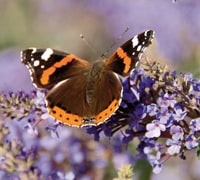
- Strimmers present grave danger to hedgehogs, frogs and other wildlife. Always disturb areas of long grass prior to strimming.
- Dead-head flowers regularly and water plants well to keep them healthy so they will produce more nectar for insects.
- Take part in the Big Butterfly Count to help the Butterfly Conservation charity assess UK butterflies and protect them.
- Trim deciduous hedges such as hornbeam, beech and hawthorn, and evergreen hedges. Take care not to disturb any nesting birds.
- Competition for food among birds can be intense with fledglings on the scene. Keep bird feeders topped up or place scraps on bird tables. Find out what to feed birds with our Bird article.
- Hoe regularly to keep on top of weeds and save resorting to chemical weed killers.
- Make sure bird baths are topped up in hot weather. Clean bird baths regularly to prevent algae and bacteria growing.
- If you're netting your crops, make sure the net is taut to prevent animals getting caught up.
- Keep ponds topped up with rainwater. Remove any blanketweed by twirling it around a stick. Leave the weed close to the pond for a few hours to allow wildlife to escape back to the water. Alternatively use Pond Wizard to clear your pond.
August
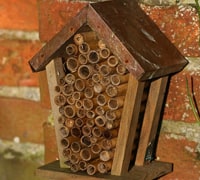
- Cut back annual and perennial wildflower meadows as soon as the plants begin to brown. For more advice read our 'How to sow wildflower seeds' article.
- Strimmers present grave danger to hedgehogs, frogs and other wildlife. Always disturb areas of long grass prior to strimming.
- Take part in the Big Butterfly Count to help the Butterfly Conservation charity assess UK butterflies and protect them.
- Add a bee house to your garden, placing it in a south-facing spot but not in direct sunlight. Read our 'Encouraging Bees in your garden' article for tips and advice.
- Sow green manures such as mustard, clover and rye grass on uncultivated areas to improve soil and control weeds naturally over winter.
- Give hedges their final trim now before they stop growing.
- Hoe regularly to keep on top of weeds and save resorting to chemical weed killers.
- Make sure bird baths are topped up in hot weather. Clean bird baths regularly to prevent algae and bacteria growing.
- Keep dead-heading flowers to encourage more to be produced, providing pollen and nectar for insects.
- Keep ponds topped up with rainwater.
September
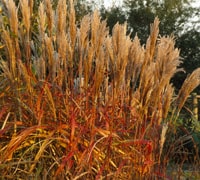
- Net your pond now in anticipation of autumn leaf fall.
- Sow green manures such as mustard, clover and rye grass on uncultivated areas to improve soil and control weeds naturally over winter.
- Sow wild flower seeds direct now, provided the soil is workable. Read our 'How to sow wildflower seeds' article for tips and advice.
- Leave seed heads of grasses and flowers intact to provide food for birds and shelter for over-wintering insects.
- Create piles of logs, rocks or hollow plant stems to provide shelter for overwintering insects such as ladybirds and lacewings.
- Make sure bird baths are topped up in hot weather. Clean bird baths regularly to prevent algae and bacteria growing.
- Keep dead-heading flowers to encourage more to be produced into autumn, providing pollen and nectar for insects.
- Leave some windfall apples, pears or plums on the ground as food for birds.
- Plan ahead for next year - autumn is the best time for planting new trees, shrubs and hardy perennials. If you want to incorporate more wildlife plants in your garden see our 'Plants for wildlife' guide.
- Cut back annual and perennial wildflower meadows as soon as the plants begin to brown. For more advice read our 'How to sow wildflower seeds' article.
- Tidy up your pond. If you need to clear pond weed lay it next to the pond for a day to allow wildlife to escape back to the water.
October
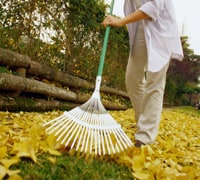
- Leave the old stems of perennial plants until spring. Dead plant material provides valuable shelter for over-wintering insects and seeds for birds.
- Create a compost heap to collect fallen leaves. This will encourage worms, slugs, beetles and other insects which in turn feed birds and mammals.
- Tidy up your pond. If you need to clear pond weed lay it next to the pond for a day to allow wildlife to escape back to the water.
- Leave some autumn leaves untouched in quiet corners of your garden. This will offer excellent shelter and foraging ground for Hedgehogs.
- Hang bird feeders and suet-based fat balls to help birds maintain their fat reserves this autumn and winter, and survive frosty weather. Find out what to feed birds with our Bird article.
- Net ponds to prevent leaves falling in and clogging up the water.
- Leave some windfall apples, pears or plums on the ground as food for birds.
- Clean bird baths with a dilute household disinfectant. Rinse thoroughly afterwards.
- Create a log or rock pile to provide winter shelter for beetles, slow worms, newts, toads and hedgehogs.
- Consider planting hedges, shrubs or trees to provide shelter for birds, hedgehogs, toads, mice and shrews.
November

- Check bonfires for hibernating hedgehogs before lighting them.
- Leave autumn leaves untouched in quiet corners of your garden. This will offer excellent shelter and foraging ground for Hedgehogs and other small animals.
- Mow or cut back perennial wildflower areas if there has been strong autumn re-growth. This weakens the grasses for successful flowering.
- Consider planting a tree or some shrubs to provide shelter and make your garden more welcoming to birds, hedgehogs, toads, mice and shrews.
- Use any fallen branches to create a log pile in a shady spot. This will provide shelter for beetles, slow worms, newts, toads and hedgehogs.
- Leave the old stems of perennial plants until spring. Dead plant material provides valuable shelter for over-wintering insects.
- Float a lightweight ball in bird baths to stop the water freezing over.
- Autumn berries are an excellent food source for many wild animals. Create your own fruiting countryside hedge by planting bare-root native trees and shrubs now.
- Put up nestboxes.
- Hang bird feeders and suet-based fat balls to help birds maintain their fat reserves this autumn and winter, and survive frosty weather. Find out what to feed birds with our Bird article.
December
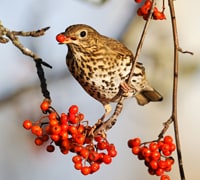
- Melt the ice on bird baths using hot water so they have access to fresh water.
- Leave your lawn to grow long over winter to provide shelter and hibernation sites for insects.
- Plant native hedges using dormant bare-root plants.
- If you're harvesting berried holly for Christmas decorations, leave some for the birds as berries are a vital winter food source.
- Use any fallen branches to create a log pile in a shady spot. In time this will attract toads, hedgehogs and insects, and support a large range of fungi.
- If the ground is workable, consider planting trees and shrubs to provide shelter and make your garden more welcoming to birds, hedgehogs, toads, mice and shrews.
- Hang bird feeders and suet-based fat balls to help birds maintain their fat reserves and survive frosty weather. Find out what to feed birds with our Bird article.
- Wash and disinfect bird feeders and bird tables. Clean out bird baths too with dilute household disinfectant. Rinse thoroughly.
Sign Up For Exclusive Special Offers
About us
Customer Help Centre
Planting & Cultural Advice
Job Vacancies
Privacy Policy
Cookies
Environmental Policy
Terms & Conditions
Certificates
Our Gardening App
T&M Marketplace
Affiliate Program
Group Scheme
Product Reviews
Delivery
Quick Shop
Gender Pay Gap
Modern Slavery Act
Gardening Club
eGift Vouchers
Request a Catalogue
Retail Enquiries
Seed Stockists
Press & Media Resources
Wholesale Enquiries
Promotional Seeds Enquiries
Ukraine Appeal




© 2025 Thompson & Morgan. All rights reserved. A division of Branded Garden Products Limited.





